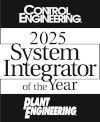Best Practices for Effective Automation Applications
E Tech Group Lead Automation Engineer, Kevin Tom shares his knowledge and expertise on the Best Practices for Effective Automation Applications in a three part series featured on Control Engineering. No matter the automation technologies being considered or implemented, universal rules apply; a significant portion includes collecting the right information for the automation project. Whether just starting or a seasoned expert, heed this advice when applying automation. Automation can do quite a bit, but do not over-reach automation’s capabilities. Automation cannot cure overly complex operations. Get the right design first, then apply the right automation. Real-world examples will help fill skills gaps with smart manufacturing. This has been edited for clarity. Explore Kevin’s three-part discussion on system integrators’ role in improving automation applications: What’s Inside? Automation SparkNotes: Part 1: Automation effectiveness through data collection Part 2: Automation case study Part 3: Automation Q&A session Part 1: Automation effectiveness through data collection Part 1 covers automation as a data-driven process built on collaboration. Multiple points of view are necessary to understand what needs accomplished, what’s expected, and how to get there. But opinions aren’t the way to make decisions. Data is. Recommendations for best practices include a full rundown of E Tech Group’s process of collecting data for initial project design, including personnel interviews, IT/OT risk assessments, equipment mapping, and pulling in every relevant department for input. The more data there is to collect, the more an opinion becomes an authoritative consideration. Specifically, a 5-step process for uncovering candidates for automation application is proposed: Dull. A dull process is repetitive or boring. An operator who is not engaged will frequently make mistakes, hurting quality benchmarks and production consistency. Dirty. Is the process or the environment dirty? Hazardous? Consider tasks like welding, painting or mixing. Dangerous. Can the process harm an operator? Consider … Continued





